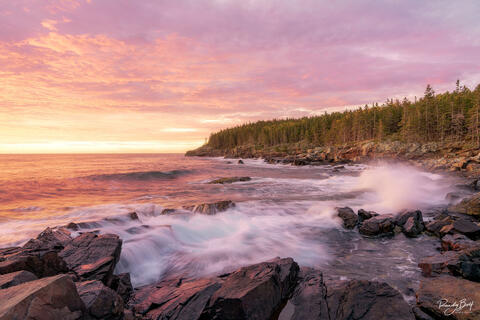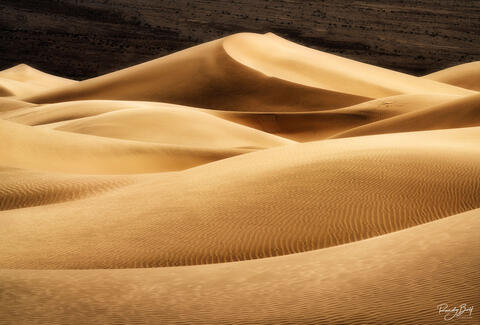The Lasting Legacy of Bob Ross
Bob Ross, with his calm demeanor and iconic hair, became a beloved figure in the world of art and television. His gentle voice and encouraging words made painting accessible to millions, and his show, "The Joy of Painting," remains a cultural phenomenon even decades after it first aired. Through his unique approach to art and teaching, Bob Ross has left an indelible mark on the world. In this blog post, we will explore the lasting legacy of Bob Ross, delving into his paintings, his influence on landscape art, and his journey as an artist. We will also examine the cultural impact he continues to have and why his work remains relevant today.
Introduction to Bob Ross
Bob Ross was born on October 29, 1942, in Daytona Beach, Florida. He discovered his passion for painting while serving in the United States Air Force, where he found solace in creating art during his off-duty hours. His journey as an artist took a significant turn when he started learning the wet-on-wet technique, a style that allowed him to complete a painting in a short amount of time. This method became a hallmark of his teaching and the foundation of his television show.
"The Joy of Painting" premiered in 1983 and quickly became a sensation. Bob Ross's soothing voice and approachable teaching style captivated viewers, making them feel capable of creating beautiful art. The show ran for 11 years, producing over 400 episodes and reaching millions of homes. Even after his passing in 1995, Bob Ross's legacy continues to thrive, inspiring new generations of artists and enthusiasts.
Bob Ross Paintings: A Window into Nature
The Signature Style
Bob Ross paintings are instantly recognizable for their serene landscapes, often featuring majestic mountains, tranquil lakes, and lush forests. His use of vibrant colors and masterful brushwork brought these scenes to life, creating a sense of peace and beauty. One of the most notable aspects of his work is the ability to convey complex landscapes with seemingly simple techniques, making it accessible to beginners and experienced artists alike.
The Wet-on-Wet Technique
The wet-on-wet technique, also known as "alla prima," involves applying wet paint onto wet paint, allowing colors to blend smoothly and creating soft transitions. This method was central to Bob Ross paintings, enabling him to complete a piece within the span of a 30-minute episode. By using this technique, he demonstrated that anyone could create a beautiful painting with the right tools and a bit of practice.
Iconic Elements
Certain elements became trademarks of Bob Ross paintings, such as "happy little trees," "fluffy clouds," and "mighty mountains." These phrases and features not only defined his art but also became part of his persona. Each episode of "The Joy of Painting" offered viewers a chance to witness the creation of a new masterpiece, often incorporating these beloved elements.
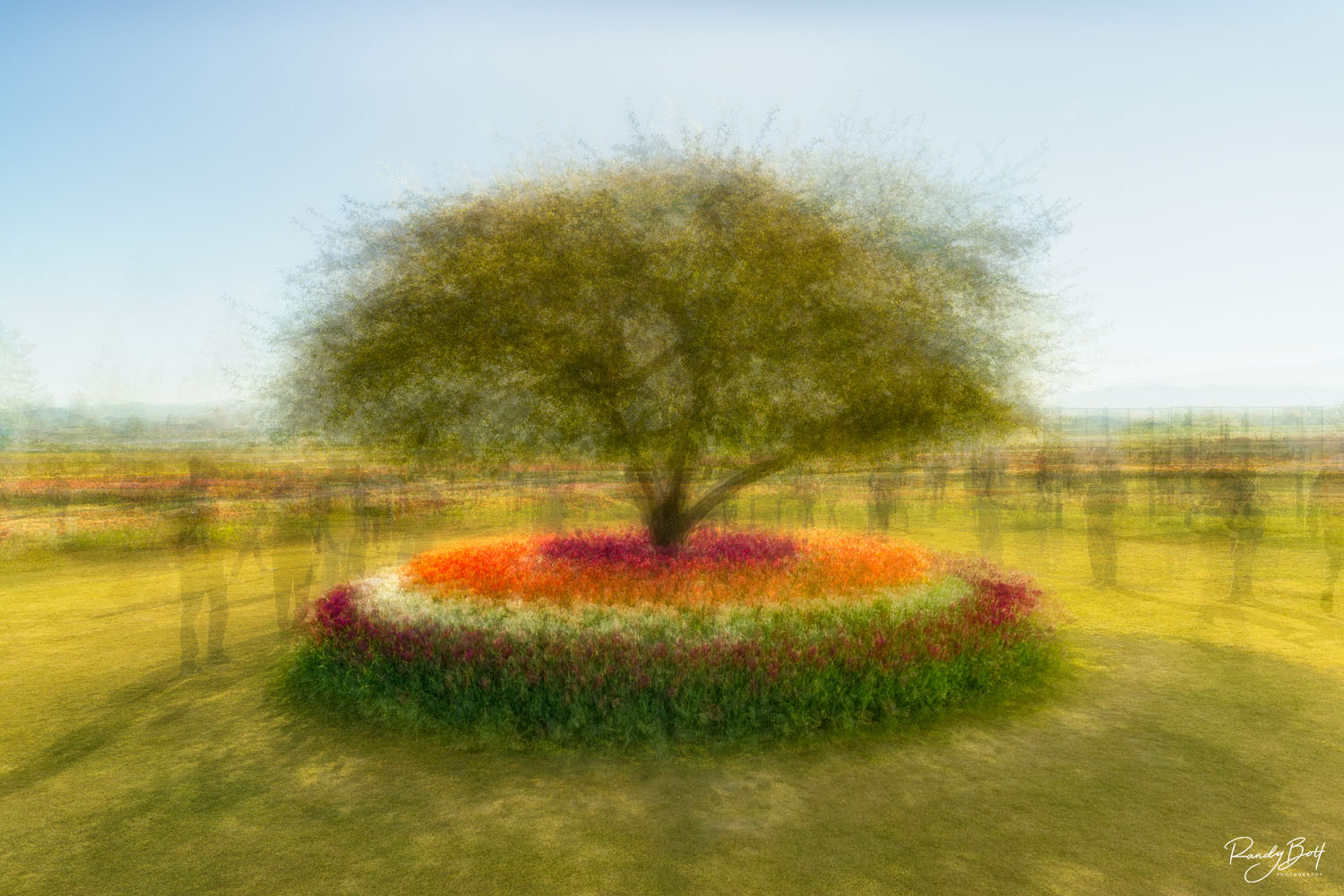
As the eye wanders through the photograph, it is drawn into a kaleidoscopic dance of light and shadow, tracing the intricate patterns of branches and leaves as they merge and diverge in a mesmerizing display of visual harmony. Through the lens, the tree transcends its physical presence, becoming a symbol of interconnectedness and vitality, a testament to the enduring power of nature's beauty. Limited edition from the Abstract gallery.
The Influence of Bob Ross on Landscape Art
Making Art Accessible
Before Bob Ross, painting was often seen as a skill reserved for the talented few. However, his approach demystified the process, showing that anyone could pick up a brush and create a work of art. By breaking down the steps and offering encouragement, he made landscape painting accessible to millions. This democratization of art is a significant part of his legacy.
Inspiring a Generation
When did Bob Ross start painting? He began his artistic journey during his time in the Air Force, but it was his television show that truly ignited a passion for painting in many. Through "The Joy of Painting," he inspired countless individuals to explore their creativity. Art supply stores saw increased sales, and painting classes filled up as people sought to emulate his techniques. His influence extended beyond his viewers, as many professional artists today cite him as an inspiration for their own work.
The Bob Ross Effect
The "Bob Ross effect" refers to the calming and therapeutic experience that viewers often report while watching his show. His soothing voice and positive attitude created a sense of tranquility, making the act of painting a form of meditation. This effect has contributed to the lasting popularity of his work, with people returning to his episodes for relaxation and stress relief.
Bob Ross's Journey as an Artist
Early Life and Military Service
Bob Ross's early life was marked by a love for nature and a deep appreciation for the world around him. This connection to nature would later become a central theme in his art. After joining the Air Force, he discovered painting as a way to unwind and express himself. It was during this time that he began to develop his unique style and approach to art.
Learning from the Masters
While stationed in Alaska, Bob Ross encountered the work of Bill Alexander, a German painter known for his wet-on-wet technique. Inspired by Alexander's methods, Ross began to refine his own skills and eventually became a certified instructor under Alexander's tutelage. This mentorship played a crucial role in shaping his artistic journey and the development of his signature style.
Launching "The Joy of Painting"
In 1983, Bob Ross's career took a significant leap forward with the premiere of "The Joy of Painting." The show quickly gained a loyal following, and Ross's approachable teaching style resonated with viewers of all ages. His ability to break down complex techniques into simple steps made painting seem achievable for everyone. The show's success allowed him to reach a wide audience and share his love for art.
Building an Empire
Beyond the television show, Bob Ross built an empire that included art supplies, instructional books, and workshops. His brand became synonymous with landscape painting, and his influence extended into various aspects of the art world. The Bob Ross Company, founded by Ross and his business partners, continues to promote his teachings and preserve his legacy.
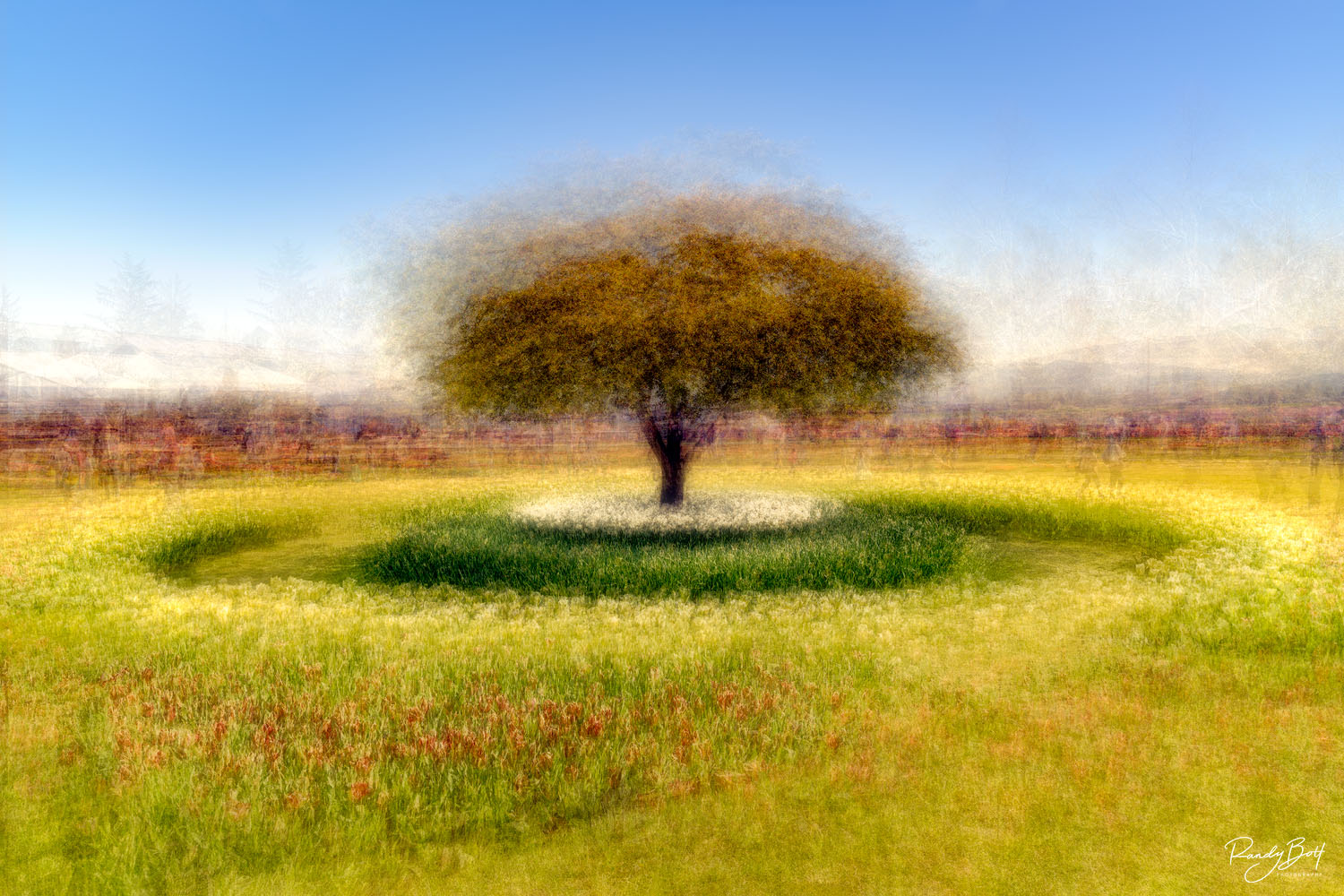
In this mesmerizing portrayal, the essence of the tree is distilled into a symphony of shapes and colors, a visual melody that resonates with the viewer's senses. Each circular layer tells a story of growth and resilience, of seasons changing and time passing, encapsulating the timeless beauty of nature in its purest form. Limited edition from the Abstract gallery.
The Cultural Impact of Bob Ross
A Pop Culture Icon
Bob Ross's impact extends beyond the art world, as he has become a pop culture icon. His image, with the signature perm and gentle smile, is instantly recognizable. References to Bob Ross appear in movies, television shows, and even video games, cementing his status as a beloved figure in popular culture. His persona represents creativity, positivity, and the belief that anyone can create something beautiful.
The Enduring Popularity of "The Joy of Painting"
"The Joy of Painting" remains popular even decades after it first aired. The show is available on streaming platforms, and reruns continue to attract new audiences. The timeless appeal of Bob Ross's teaching style and the calming effect of his voice have ensured that his legacy endures. Viewers find comfort and inspiration in his episodes, returning to them time and again.
The Therapeutic Power of Art
Bob Ross's influence extends into the realm of mental health and wellness. The act of painting, as demonstrated by Ross, can be a therapeutic and meditative experience. Art therapy programs often incorporate his techniques to help individuals express themselves and find solace. The "Bob Ross effect" continues to provide comfort and relaxation to those who engage with his work.
Continuing Education and Inspiration
The Bob Ross Art Workshop and Gallery in New Smyrna Beach, Florida, serves as a testament to his enduring legacy. The workshop offers classes and workshops that continue to teach Ross's techniques, allowing new generations of artists to learn and be inspired. The gallery showcases original Bob Ross paintings, providing visitors with a firsthand look at his work and the opportunity to appreciate his artistic contributions.
Conclusion: The Lasting Legacy of Bob Ross
Bob Ross's legacy is one of creativity, inspiration, and accessibility. Through his television show, "The Joy of Painting," he brought the joy of art to millions, making landscape painting approachable and enjoyable. His signature style, use of the wet-on-wet technique, and iconic elements like "happy little trees" have left an indelible mark on the world of art. When did Bob Ross start painting? His journey began in the Air Force, but his influence has grown far beyond those early days.
Bob Ross paintings continue to inspire artists and enthusiasts, and his cultural impact remains strong. From pop culture references to the therapeutic power of art, his legacy endures. As we reflect on the lasting impact of Bob Ross, we are reminded of the importance of creativity and the belief that anyone can create something beautiful.
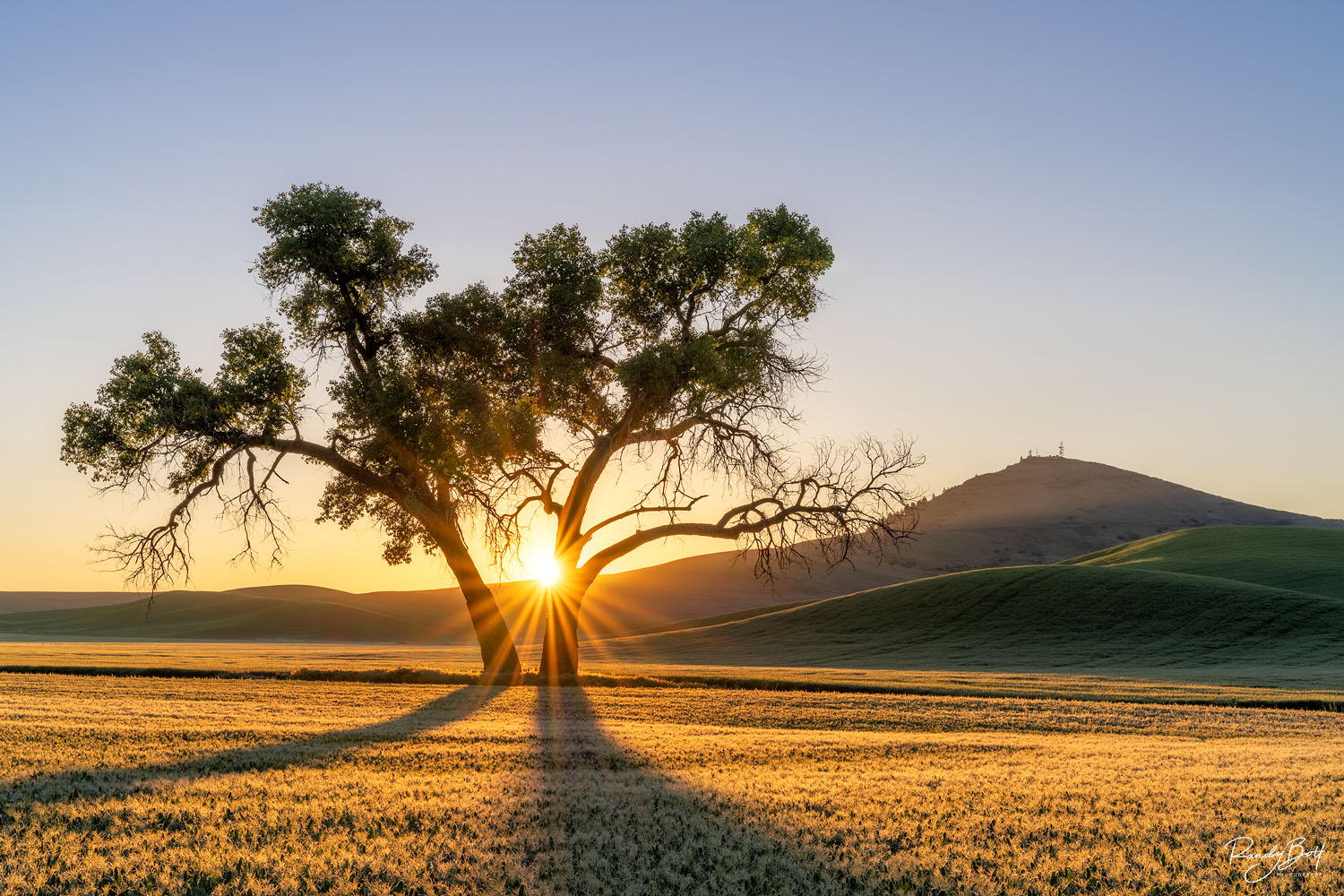
A breathtaking scene unfolds at sunrise, featuring a solitary tree standing majestically against the backdrop of Steptoe Butte. The Palouse, with its distinctive, gently rolling hills, provides a stunning contrast to the vibrant colors of the dawn. The lone tree, silhouetted against the radiant sky, adds a touch of serene beauty to the landscape, creating a perfect harmony between nature and light. This tranquil moment captures the essence of solitude and the peaceful beginning of a new day. Limited edition print from the Palouse gallery.
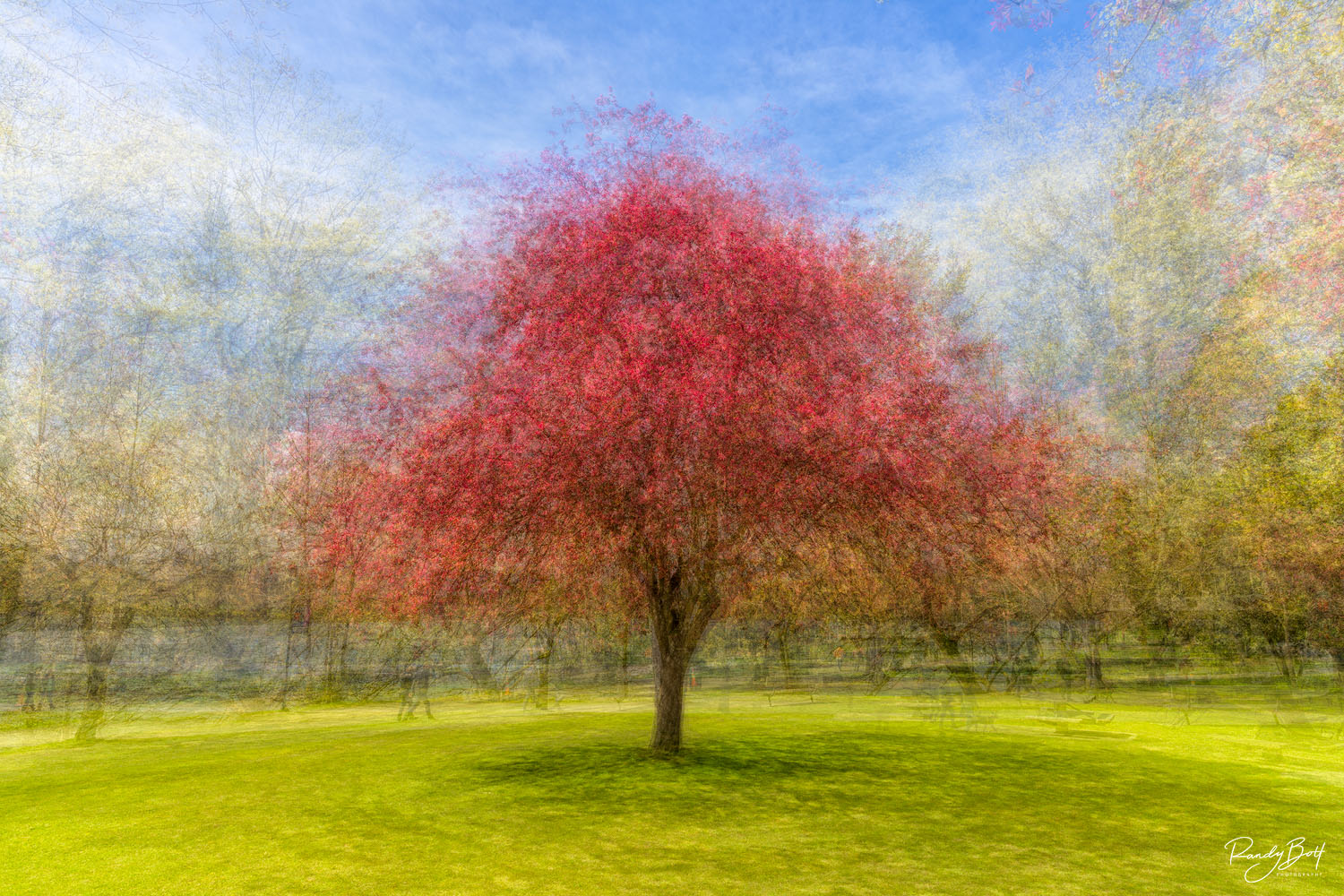
In the style of layering images, the photograph of a solitary tree takes on a captivatingly unique perspective. Through this technique of multiple exposures and circular compositions, the tree becomes a focal point of intricate layers and textures, each frame overlapping and blending seamlessly into the next. Limited edition from the Abstract gallery.

